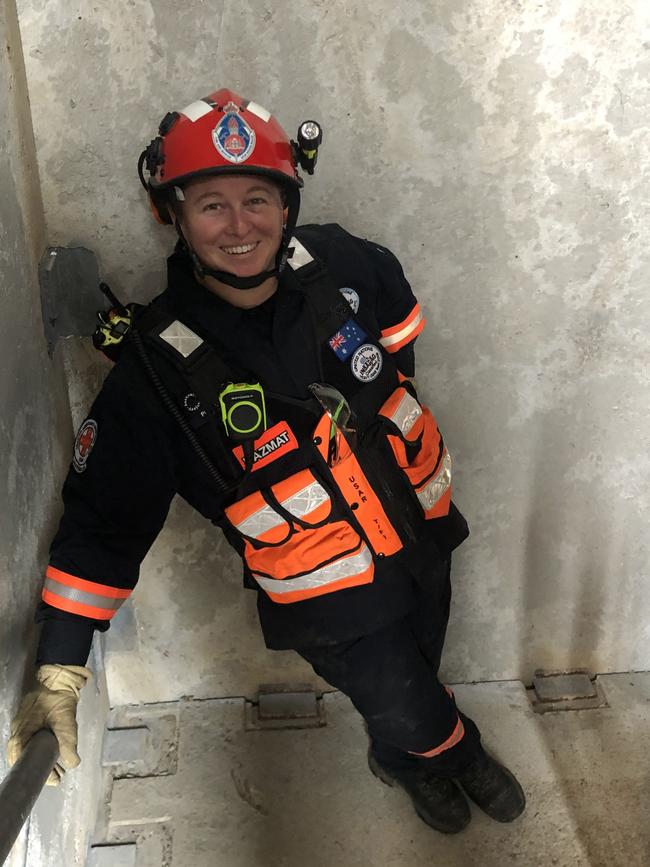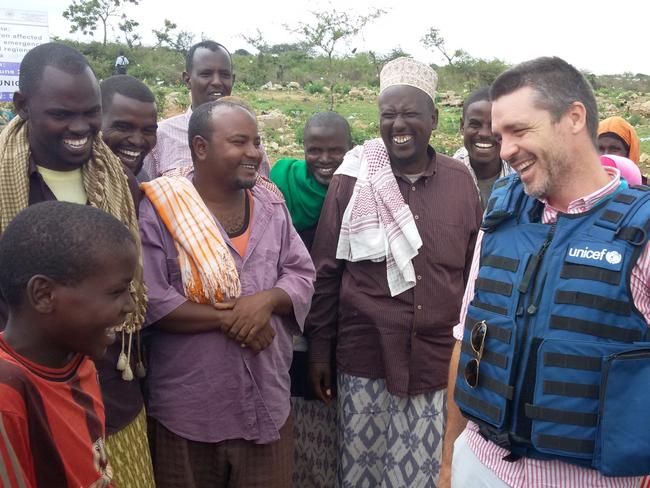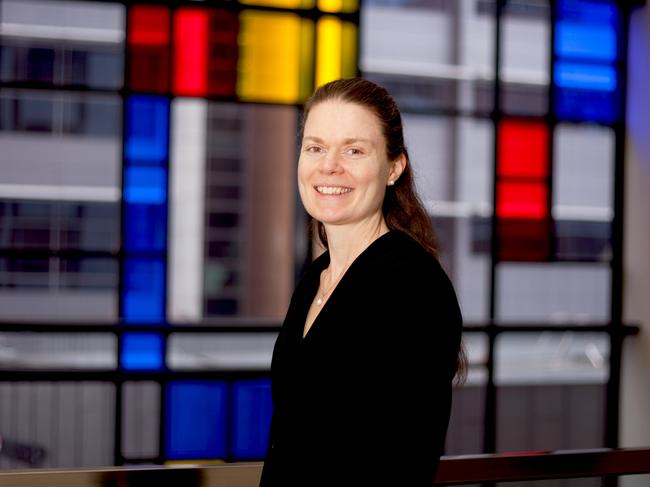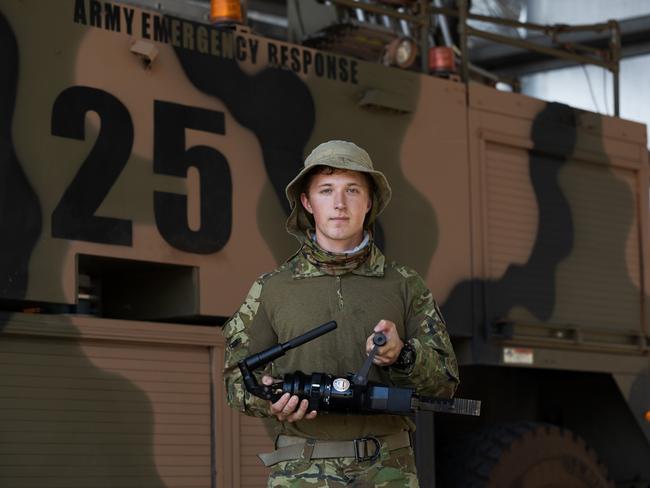Emergency services pilot to firefighter: Meet the Aussies saving lives for a living
Meet six Australians whose jobs allow them to be literal life savers – including some who are raking in six-figure salaries on top of unrivalled job satisfaction.

Careers
Don't miss out on the headlines from Careers. Followed categories will be added to My News.
Traditional medical professions are not the only career paths for those with ambitions to save and improve lives. As school leavers near the end of their studies and ponder what’s next, six inspiring Australians share their experience helping others.
The emergency services pilot, Michael Wilson
Average salary $118,000

As a helicopter pilot with LifeFlight, Michael Wilson gets sick and injured Queenslanders to medical facilities as quickly as possible.
He’s helped people of all ages but says the youngest patients leave the greatest impact.
“Neonatal transfers – babies who require urgent specialist care – always strike a note with me,’’ Wilson says. “They are generally newborns and are usually only hours old.
“While the flying, for me, on these taskings is very much routine, the importance for the parents and unwell child is always seen and felt.
“Being a small part of giving the baby the best health outcome at the start of their journey is never lost on me.’’
After obtaining his helicopter licence, Wilson worked with several organisations to gain further experience and qualifications, including flying at night and in challenging weather conditions.
Since joining LifeFlight, he has undertaken search and rescue training and worked alongside his father and fellow pilot, Trevor.
The firefighter, station officer Peta Miller
Average salary $65,485

Fire and Rescue NSW station officer Peta Miller has helped save countless lives. One of her most memorable saves didn’t even involve fire.
“It was my first ever job. I was just waiting for the sirens to go off but it was the (station) doorbell that rang,’’ says Miller, a mum-of-two and former personal trainer and swim instructor.
“A lady was frantic. She didn’t speak English and was trying to communicate with me that her daughter was choking.
“I ran over to her daughter, put her over my knee and did the back blows and a piece of cucumber flew out of her mouth.
“She had been blue but just watching her turn pink again was such an overwhelming experience.’’
To become a firefighter, Miller underwent psychometric testing and demanding fitness training, followed by a 14-week training program and a two-year firefighting “apprenticeship’’.
Regular specialised training also gives Miller confidence to handle dangerous situations, despite the unpredictable nature of fires.
“We get to help people who are having the worst days of their lives,’’ she says. “It’s an incredible feeling.”
The humanitarian aid worker, Brendan Ross
Average salary $98,193

Brendan Ross accepts that his job has good days and bad days.
Adelaide-raised Ross has spent the last two years in South Sudan as UNICEF’s chief of child protection.
He helps protect children from violence, exploitation and abuse and works with local communities to eliminate harmful practices, such as child marriage and genital mutilation.
“It’s incredibly challenging – the low days can be really low,’’ says Ross, who has a Bachelor of International Business and a Master of International Development.
“You see a lot of death and a lot of harm.
“But the good days are quite amazing. The changes you make can transform people’s lives.’’
The police officer, Sergeant Breeanna Folley
Average salary $69,919

Breeanna Folley was looking for a bigger challenge, more variety of work and an opportunity to make a positive contribution to society when she joined South Australian Police.
She was recruited with just her Year 12 qualifications, but has since completed a detective training program, and 4WD and field tutor courses.
She now helps new cadets in the job.
Having been posted to several regional police stations, including in the remote APY Lands in SA’s northwest, Folley says each workday brings new experiences and challenges.
This has included rendering medical assistance before paramedics reach a scene, where the ability to think quickly with limited resources becomes lifesaving.
“Rescuing a life is monumental,’’ Folley says.
“Adrenaline surges as you focus on finding the best solution to help.
“The overwhelming sense of relief when you realise that person will return to their loved ones is indescribable.’’
The medical researcher, Professor Julie McMullen
Average salary $104,344

Leading heart researcher Julie McMullen describes her work as a roller coaster ride.
“Experiments or studies don’t always work out as you plan or hope,’’ she says. “Hours can be long and it can be frustrating when experiments don’t work.
“But … when experiments work or you discover something entirely unexpected or exciting, it is an extraordinary feeling.’’
McMullen, research director at the Heart Research Institute, holds a degree in biomedical science and a PhD.
She’s discovered that gene changes in heart disease-induced heart enlargement do not occur in exercise-induced heart enlargement, paving the way to improve the organ’s function.
“These new approaches are being tested in laboratory models, but we hope they will later enter the clinic to improve the quality of life of patients with heart disease and save lives,’’ she says.
The soldier, Sapper Samuel Linke
Average salary $73,450

Samuel Linke knew from an early age he wanted to be a soldier, signing up with the Australian Army as soon as he finished school
The combat rescue operator completed a 90-day training program at Kapooka, near Wagga Wagga, before being assigned to a unit and undergoing a further six-month training program to learn how to rescue personnel in war environments.
Since then, Linke has been to East Timor to help train Timorese medics in rescue operations.
He says the personal dangers involved in flying into war zones and winching someone to safety don’t faze him.
“It worries my family though,’’ he says. “There have been a few close calls … but we’ve done a lot of training and it’s what I wanted to do when I joined up.”
Salary source: Talent


